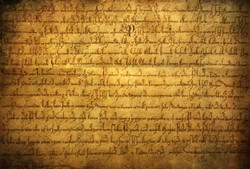Digital tools in the study of medieval handwriting
The EU-funded DIGIPAL (Digital resource and database of palaeography, manuscripts and diplomatic) project examined English handwriting from the 11th century AD by integrating digital catalogues, descriptions of handwriting, and images of documents and their constituent letter forms. In order to do this, however, it also asked fundamental questions about what handwriting is and how to describe it. The project team created an open-source web-based software to analyse handwriting and then applied this to material in the vernacular from England, as well as books, documents or other objects that contain such handwriting. This includes an entirely new model and method for the description of writing which enables researchers to annotate images, explore the visual and verbal data, and then communicate it to others. The software can be applied to any script, and it is already being used to study the Latin alphabet, Greek and Hebrew. In addition, it is being applied to stone inscriptions, coins, manuscripts and manuscript decoration from the ancient, medieval and modern periods. The DIGIPAL team used this framework to set up a database of content concerning English vernacular minuscule that is freely accessible on the project website. It contains over 900 images of medieval handwriting that is marked up with over 60 000 annotated images of letters. Researchers introduced new methods in quantitative and digital palaeography that have proven very difficult to put into practice until now, and which bring novel ways of studying handwriting and describing writing that have already proven very effective and have influenced work not only in history, literature and palaeography but also in areas of computer science. The project produced a significant amount of scholarly output. Most notably, it delivered about 70 lectures or talks, and published a monograph on English vernacular script, an edited collection on digital approaches to palaeography (forthcoming), 11 peer-reviewed articles or chapters in books, and 8 working papers. DIGIPAL has provided access for the first time to the complete corpus of surviving examples of English vernacular script. In doing so, it represents the first comprehensive account of English vernacular script for the given time period. Perhaps more significantly, it has also introduced new methods for the study of writing, whether historical or modern, which are being used increasingly widely and which have already changed the way that we think about script.
Keywords
Medieval handwriting, English vernacular script, DIGIPAL, palaeography

